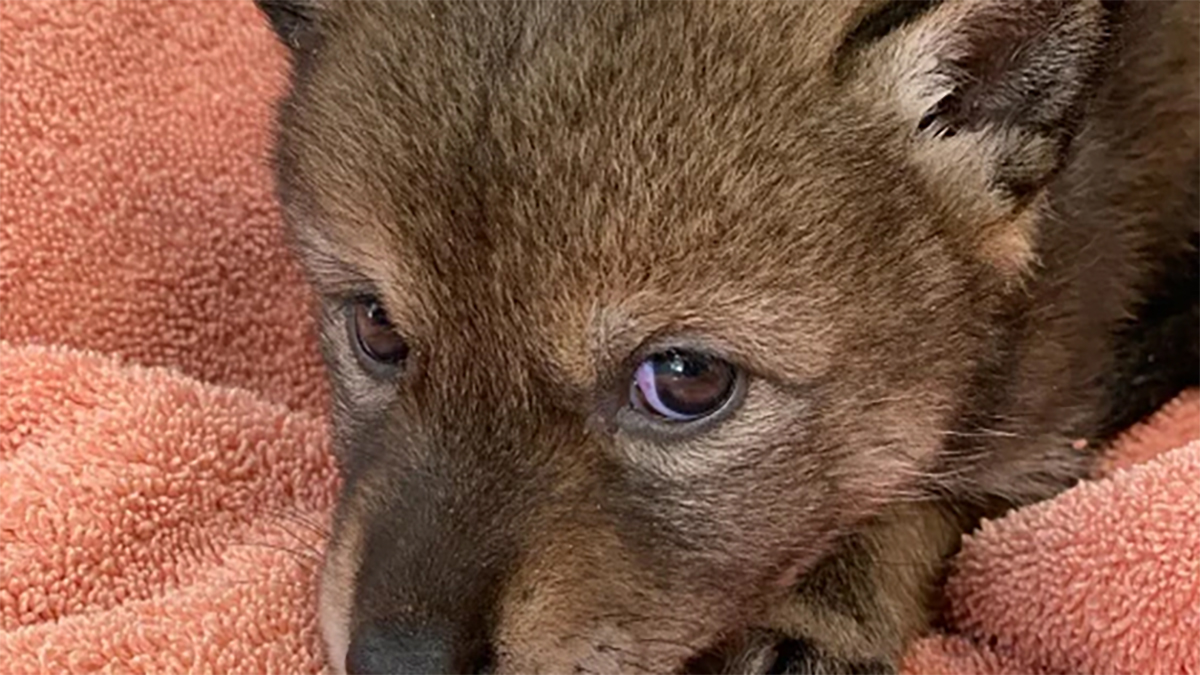A coyote made its way into a Woodland Hills home by entering through the doggie door on the side of her house. Darsha Philips reports for the NBC4 News at 11 p.m. on May 29, 2022.
Coyote sightings often prompt owners to keep their small pets inside. But what do you do when a coyote makes its way inside your home? That's what one Woodland Hills resident experienced.
Julie Levine runs a non-profit dog rescue called Canine Rescue Connection.
On Saturday morning around 1:00 a.m., at her home, Levine got a visit from a canine she wasn’t expecting.
Surveillance footage caught the moment the coyote made its way into her home through a doggie door and spent about three minutes inside.
Get top local stories in San Diego delivered to you every morning. Sign up for NBC San Diego's News Headlines newsletter.
“He walked along this ways as you see in the video, jumped down right about here the motion sensor lights came on and he found the dog door,” Levine said”
Levine didn’t realize she had an intruder until her senior rescue dogs started barking.
“I think he got three quarters the way down the hallway and kind of saw us perhaps and kind of realized what he was up against and kinda took off,” Levine said. “I have beagles and that’s what the tracking was all about they got the scent in their nose and they just went crazy,”
The coyote had already made his escape, Levine checked her cameras to figure out what all the fuss was about and couldn’t believe what she saw.
Although coyotes rarely attack humans, in April a coyote attacked a child at Huntington Beach Pier, leaving her with facial injuries.
Entering a home is also not something you often hear about, but coyotes are known to injure and even kill small pets.
“They are bold, they are smart, they are looking for food, they're looking for water and they may just bring some friends back the next time around,” Levine said.
Levine thinks this coyote has been in her neighborhood before. Just last week surveillance cameras caught this video of her neighbor chasing a coyote off his property.
“Coyotes are out there, we all know that we all know they can scale fences. This was a 6 foot fence,” Levine said.
Levine says she is thankful the coyote didn’t get to her dogs and will be taking some extra measures to keep her precious pups safe.
Now the dog door at Levine’s house is shut and she wants to make sure it never happens again.
Coyotes are highly adaptable animals that have learned to live comfortably in many environments, including around humans. Wildlife experts say we've played a role in part by leaving food and garbage out for an attractive snack.
By nature, they're fearful of humans. They primarily hunt rodents, and help keep that population under control, but will not ignore an easy meal.
Here's list of coyote precautions from the California Department of Fish and Wildlife.
Never feed or attempt to tame coyotes. The result may be deadly conflicts with pets or livestock, or serious injuries to small children.
Do not leave small children or pets outside unattended.
Install motion-sensitive lighting around the house.
Trim ground-level shrubbery to reduce hiding places.
Be aware that coyotes are more active in the spring, when feeding and protecting their young.
If followed by a coyote, make loud noises. If this fails, throw rocks in the animal’s direction.
If a coyote attacks a person, immediately contact the nearest Department of Fish and Wildlife or law enforcement office.
Put garbage in tightly closed containers that cannot be tipped over.
Remove sources of water, especially in dry climates.
Bring pets in at night, and do not leave pet food outside.
Avoid using bird feeders as they attract rodents and other coyote prey.
Provide secure enclosures for rabbits, poultry and other livestock.
Pick up fallen fruit and cover compost piles.
Ask your neighbors to follow these tips.



